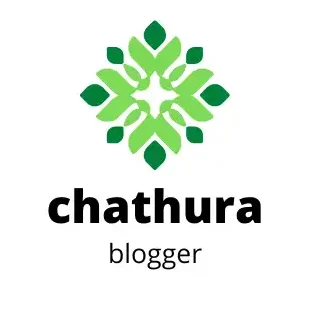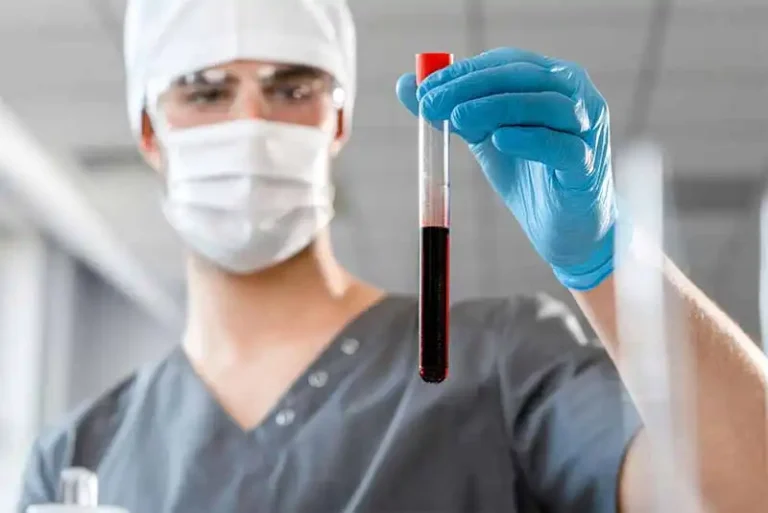Google Ads for Acupuncture: A Comprehensive Guide to Boosting Your Practice
In today’s digital age, simply relying on word-of-mouth referrals or a physical storefront isn’t enough to grow your acupuncture practice.
Patients are turning to search engines like Google to find local healthcare providers, including acupuncturists, for services ranging from pain relief to stress management.
This is where Google Ads comes in—a powerful tool that helps acupuncture clinics connect with people actively searching for the services they offer.
Google Ads is especially valuable for acupuncturists because it allows your clinic to stand out in a crowded market.
Instead of waiting for patients to find you, you can place your clinic at the top of search results, right when potential clients are looking for solutions.
Whether someone types in “acupuncture near me,” “best acupuncturist in [city],” or “acupuncture for lower back pain,” your ad can be one of the first things they see.
Unlike traditional advertising, Google Ads is highly targeted and cost-effective. You can control where your ads appear, set budgets that work for your clinic, and only pay when someone clicks on your ad.
This pay-per-click (PPC) model ensures that your marketing dollars are spent attracting people who are genuinely interested in acupuncture services.
What’s more, Google Ads lets you focus on local targeting, ensuring your ad is shown to people in your area who are most likely to book an appointment.
With features like location extensions, call tracking, and keyword optimization, you can refine your campaigns to get the best results.
Beyond just driving website traffic, Google Ads helps acupuncturists build trust and credibility by consistently appearing in relevant search results.
This consistent visibility not only attracts new clients but also reinforces your brand as a reliable and professional acupuncture clinic.
If you’re looking to maximize your return on investment (ROI) and grow your patient base, Google Ads is one of the most effective marketing strategies for acupuncturists.
It puts you in control of your marketing efforts, helping you achieve measurable results while focusing on what you do best—helping patients heal and feel better.
By the end of this guide, you’ll learn everything you need to know to set up and run a successful Google Ads campaign for your acupuncture clinic.
Whether you’re new to digital marketing or just looking to improve your current efforts, this step-by-step guide will show you how to attract more patients and grow your practice effectively.
What Are Google Ads and Why Do They Matter for Acupuncturists?
Google Ads is an online advertising platform that allows businesses to create and display ads across Google’s search results and its extensive network of partner websites.
These ads are designed to appear when people search for specific keywords, such as “acupuncture for pain relief” or “local acupuncturist near me.”
The goal is to connect businesses, like acupuncture clinics, with potential customers actively looking for their services.
For acupuncturists, Google Ads can be a game-changer. Unlike traditional advertising methods like flyers or print ads, Google Ads targets people who already have an interest or need for acupuncture.
This ensures your marketing efforts are directed at those most likely to book an appointment.
How Do Google Ads Work?
Google Ads operates on a pay-per-click (PPC) model, meaning you only pay when someone clicks on your ad.
Here’s a simplified version of how the process works:
- Keyword Targeting: You choose specific keywords that your potential patients are likely to search for, such as “stress relief acupuncture” or “acupuncture for migraines.”
- Ad Placement: When someone searches for those keywords, Google evaluates all competing ads in a quick auction. The winning ads are shown at the top of the search results.
- Paying for Results: You pay a fee when someone clicks on your ad, directing them to your website, landing page, or Google Business profile.
With this approach, you’re not wasting money on a broad audience but instead focusing on highly targeted traffic—people actively seeking acupuncture services in your area.
Why Are Google Ads Important for Acupuncturists?
Acupuncture clinics often serve a specific geographic area, making local visibility critical.
Google Ads allows you to target specific locations, ensuring that your ads appear only to potential patients nearby.
This is especially important in a field like acupuncture, where most clients prefer local practitioners they can trust.
Additionally, Google Ads helps acupuncture clinics:
- Improve Visibility: Appear at the top of Google search results, even if your website’s organic SEO isn’t yet strong.
- Attract New Patients: Reach people actively searching for services like acupuncture for pain relief, relaxation, or fertility support.
- Build Credibility: Consistently showing up in relevant searches reinforces your reputation as a trusted local acupuncturist.
- Track Results: Unlike traditional marketing, Google Ads provides detailed analytics to track ad performance, allowing you to refine your campaigns for better results.
Case Studies: The Effectiveness of Google Ads for Healthcare Professionals
Google Ads has a proven track record of helping small businesses, including healthcare providers, grow their client base.
For example, a case study by Google showed that a small physiotherapy clinic saw a 65% increase in new patient inquiries after implementing a targeted Google Ads campaign.
Similarly, another study revealed that healthcare ads have some of the highest conversion rates, averaging around 3.27%, compared to other industries.
For acupuncture clinics, this means that investing in Google Ads can result in a steady flow of new clients, making it a highly cost-effective marketing strategy.
By targeting high-intent keywords like “best acupuncture clinic near me” or “acupuncture for chronic pain,” you can ensure your ads reach the right audience at the right time.
Google Ads is more than just an advertising platform; it’s a bridge between your clinic and people actively searching for the relief and healing acupuncture provides.
By using its tools effectively, you can grow your practice, attract new patients, and ensure your services are always in front of the people who need them most.
Why Acupuncture Clinics Should Invest in Google Ads
For acupuncture clinics, investing in Google Ads can be one of the most effective ways to grow your patient base and improve your clinic’s visibility in a competitive market.
Unlike traditional marketing strategies, which often rely on broad messaging and hope for the best, Google Ads enables you to target your ideal audience with precision.
Whether you’re looking to attract more local patients or highlight your clinic’s specialties—such as acupuncture for pain relief, stress management, or fertility support—Google Ads delivers measurable results tailored to your needs.
Unique Benefits of Google Ads for Acupuncturists
Local Targeting for Maximum Impact
Acupuncture clinics thrive on local clientele. Google Ads allows you to zero in on specific geographic areas where your potential patients live or work.
With location-based targeting, you can ensure your ads are shown to people searching for services like “acupuncture near me” or “acupuncture for lower back pain” within your city or neighborhood.
This level of precision helps you attract patients who are not only interested but also nearby, making them more likely to book an appointment.
Cost Efficiency with Pay-Per-Click (PPC)
One of the standout features of Google Ads is its pay-per-click model, which ensures you only pay when someone clicks on your ad.
This cost-efficiency means your marketing budget is spent attracting genuinely interested leads, rather than wasting money on people who might not need your services.
For acupuncturists, this is particularly valuable because it allows you to test different campaigns and refine them over time without overspending.
Enhanced Online Presence
In today’s digital-first world, being visible online is critical for any business, including acupuncture clinics.
Google Ads helps you appear at the top of search results, even if your website’s organic SEO hasn’t fully developed.
This increased visibility not only attracts new patients but also establishes your clinic as a reputable and accessible choice in the eyes of potential clients.
Customization and Flexibility
With Google Ads, you’re in control of every aspect of your campaign. You can tailor your ads to highlight specific treatments, such as acupuncture for migraines or anxiety, and adjust your budget, ad copy, and keywords to match your clinic’s goals.
Whether you want to promote a new patient discount or increase bookings during slow seasons, Google Ads offers the flexibility to adapt to your needs.
Google Ads vs. Other Advertising Methods
When it comes to promoting an acupuncture clinic, Google Ads offers several advantages over traditional and digital advertising methods:
Google Ads vs. Social Media Advertising
While social media platforms like Facebook and Instagram are great for building brand awareness and engaging with your audience, they often rely on interruption-based marketing.
This means your ad appears while users are scrolling through their feed, which might not be the moment they’re actively looking for acupuncture services.
In contrast, Google Ads captures high-intent leads—people who are actively searching for services like “acupuncture for sciatica” or “best acupuncturist in [city].”
Google Ads vs. Print Ads
Traditional print advertising, such as flyers or newspaper ads, can be costly and difficult to measure in terms of effectiveness.
With Google Ads, you have access to real-time analytics that show exactly how many people saw your ad, clicked on it, and booked an appointment.
This level of transparency makes it easier to calculate your return on investment (ROI) and adjust your strategy accordingly.
Google Ads vs. Organic SEO
While organic search engine optimization (SEO) is a valuable long-term strategy, it can take months to see results.
Google Ads provides an immediate boost to your online presence, placing your clinic at the top of search results within hours of launching a campaign.
This makes it an ideal solution for acupuncturists who want quick results while working on improving their organic rankings.
Real-Life Example: The Power of Google Ads for Small Clinics
Imagine an acupuncture clinic in Los Angeles that specializes in stress relief treatments. By running a Google Ads campaign targeting keywords like “stress relief acupuncture in Los Angeles,” the clinic saw a 50% increase in appointment bookings within the first three months.
This was achieved by combining local targeting with compelling ad copy and optimized landing pages.
Google Ads isn’t just another marketing tool—it’s a highly effective way for acupuncture clinics to connect with patients who need their services.
With benefits like precise local targeting, cost efficiency, and enhanced online presence, Google Ads empowers you to grow your clinic in a measurable, sustainable way.
Compared to other advertising methods, it stands out as a practical choice for acupuncturists looking to attract new patients and maximize their marketing ROI.
Essential Google Ads Terminology Every Acupuncturist Should Know
Getting started with Google Ads can feel overwhelming, especially with all the technical jargon.
But understanding these key terms is crucial for running successful campaigns for your acupuncture clinic.
Here’s a simple breakdown of the essential Google Ads terminology every acupuncturist should know:
Pay-Per-Click (PPC)
PPC is the foundation of Google Ads. It means you pay a fee every time someone clicks on your ad.
Think of it as a way to “buy” visits to your website or landing page. For example, if you run a campaign targeting “acupuncture for back pain,” you’re only charged when a potential patient clicks on your ad to learn more.
PPC ensures you’re spending your budget only on interested leads, making it cost-effective for small businesses like acupuncture clinics.
Click-Through Rate (CTR)
CTR measures how often people click on your ad after seeing it. It’s expressed as a percentage and calculated using this formula:
CTR = (Clicks/Impressions) x 100
If your ad for “local acupuncturists near me” gets 10 clicks out of 100 impressions, your CTR is 10%.
A higher CTR indicates your ad is relevant and engaging. Google uses CTR to determine your ad’s performance and ranking.
Quality Score
Quality Score is a rating (out of 10) Google assigns to your ad’s relevance and quality. It’s based on factors like keyword relevance, landing page experience, and CTR.
A high Quality Score can lower your cost-per-click (CPC) and improve your ad’s position. For acupuncturists, optimizing your ad and landing page content with keywords like “holistic acupuncture treatment” can boost your Quality Score.
Cost-Per-Click (CPC)
CPC is the amount you pay for each click on your ad. It varies depending on the competition for your chosen keywords.
If the keyword “acupuncture for migraines” has a high competition, you might pay $2 per click, whereas a less competitive keyword like “acupuncture in small towns” might cost $0.50 per click.
Knowing your CPC helps you budget effectively. If you’re spending $50 for 25 clicks and getting five appointments from those clicks, your campaign is working.
Conversions
A conversion happens when someone takes the desired action after clicking your ad. For acupuncture clinics, this could mean booking an appointment, filling out a contact form, or calling your clinic.
Conversions are the ultimate goal of your Google Ads campaign. Tracking them helps you measure your return on investment (ROI).
Making It Easy: A Quick Glossary Table
|
Term |
What It Means |
|---|---|
|
PPC |
Paying only when someone clicks your ad |
|
CTR |
Percentage of ad viewers who click on your ad |
|
Quality Score |
Google’s rating of your ad’s relevance and quality |
|
CPC |
The cost of each click on your ad |
|
Conversions |
When a user completes a goal, like booking an appointment |
Practical Tips for Acupuncturists
- Monitor CTR and CPC regularly: A low CTR might mean your ad isn’t appealing, while a high CPC could signal intense competition for your keywords. Adjust your ad copy and targeting to improve both.
- Focus on Quality Score: Craft ads and landing pages that speak directly to what patients are searching for, such as “affordable acupuncture for stress relief.”
- Track conversions: Use tools like Google Ads conversion tracking to see which campaigns are driving real results for your clinic.
Visualizing Success: A Case Example
Let’s say you run a campaign targeting “acupuncture for neck pain relief.”
- CTR: 8%
- CPC: $1.50
- Conversions: 10 bookings from 100 clicks
In this case, your campaign has a strong CTR, reasonable CPC, and excellent ROI, showing that understanding these terms helps optimize your ads effectively.
Understanding the basics of Google Ads terminology empowers you to make better decisions for your acupuncture campaigns.
By focusing on metrics like PPC, CTR, and conversions, you can fine-tune your efforts to attract more patients and grow your clinic.
Remember, the more informed you are, the better your campaigns will perform!
Step-by-Step: Setting Up Google Ads for Your Acupuncture Clinic
Setting up Google Ads for your acupuncture clinic requires careful planning and execution.
By following this step-by-step guide, you’ll ensure that your campaign is optimized to reach local patients effectively, drive clicks, and convert leads into bookings.
Choosing the Right Campaign Settings
The foundation of your success lies in selecting the correct campaign settings. These settings define how and where your ads will appear, ensuring you target the right audience.
Campaign Types
- Search Campaigns: Ideal for reaching potential clients actively searching for terms like “acupuncture near me” or “acupuncture for back pain.” These text-based ads appear at the top of Google search results.
- Display Campaigns: Use these for visual ads that appear on websites and apps. They’re great for building brand awareness but may not lead to immediate bookings.
- Local Campaigns: Designed to promote your clinic in a specific area, making it easy for patients nearby to find you.
Budget Settings
Decide on a daily budget based on your overall advertising spend. For example, if your monthly budget is $300, set your daily budget to around $10. Start small and scale up as you see results.
Geographic Targeting
Focus on your clinic’s local area. Use radius targeting to ensure your ads reach users within a manageable distance, such as “5 miles around Downtown Los Angeles.”
Include terms like “acupuncture in [your city]” to ensure your ads are relevant to local searches.
Structuring Effective Ad Groups
Ad groups are where you organize your campaign based on specific services or patient needs. Each group should have its own set of keywords and ads tailored to a particular theme.
Proper ad group organization ensures your ads are relevant, which improves Quality Score and ad performance.
How to Structure the ad groups properly,
Service-Based Groups
Create separate ad groups for services like:
- “Pain Relief Acupuncture”
- “Stress Reduction Acupuncture”
- “Fertility Support Acupuncture”
Keyword Organization
Use keywords related to each service. For instance, in the “Pain Relief Acupuncture” group, include:
- “acupuncture for neck pain”
- “back pain acupuncture treatment”
- “pain relief acupuncturist near me”
Keep each ad group focused on a single service or treatment type to maintain clarity and relevance.
Crafting Compelling Ads for Your Acupuncture Clinic
Your ads need to grab attention and convince potential patients to click. Here’s how to create ad copy that stands out:
Headlines
Use clear, engaging headlines that address the patient’s pain points or goals.
- Example 1: “Relieve Chronic Pain with Expert Acupuncture”
- Example 2: “Restore Balance with Stress-Free Acupuncture Care”
Descriptions
Highlight your clinic’s benefits, services, or unique selling points in two concise sentences.
- Example: “Our licensed acupuncturists specialize in effective pain relief treatments. Book your session today and feel the difference!”
Call-to-Actions (CTAs)
Encourage immediate action with phrases like:
- “Schedule Your First Appointment Today!”
- “Call Now for a Free Consultation!”
Include dynamic ad assets, like location extensions, to make it easier for users to find or contact your clinic.
Understanding Keyword Match Types
Keywords determine when your ads appear in searches. Selecting the right match types ensures you strike a balance between broad reach and specific targeting.
Broad Match
Shows your ad for searches related to your keyword, even if they don’t exactly match.
- Example: Keyword “acupuncture” may trigger searches for “holistic treatments” or “Chinese medicine.”
- Best for: Reaching a wide audience but can result in less precise targeting.
Phrase Match
Displays your ad for searches that include your keyword in a specific order.
- Example: Keyword “acupuncture for stress” may trigger “best acupuncture for stress relief.”
- Best for: Balancing reach and relevance.
Exact Match
Triggers your ad only for searches that exactly match your keyword.
- Example: Keyword [acupuncture near me] will only show for that specific query.
- Best for: Maximizing relevance but with limited reach.
Start with a mix of phrase and exact match keywords for services like “acupuncture for migraines” or “local acupuncturist in [your city].”
Regularly review your search terms report to add negative keywords and refine your targeting.
Setting up Google Ads for your acupuncture clinic doesn’t have to be intimidating. By choosing the right campaign type, organizing ad groups effectively, crafting persuasive ad copy, and understanding keyword match types, you’ll create a campaign that attracts local patients and maximizes ROI.
Take the time to test and optimize each step of your campaign for continuous improvement—your future clients are searching for your services, and this is your chance to connect with them.
Creating Engaging Google Text Ads
Your Google text ads are the face of your acupuncture clinic online. These ads need to grab attention, communicate your unique offerings, and encourage potential clients to take action—all in just a few lines.
But to truly stand out, you can enhance your ads using ad assets (previously called ad extensions).
These additional elements improve visibility, provide more information, and make it easier for potential clients to connect with your clinic.
Using Ad Assets to Maximize Results
Ad assets are tools that add extra information to your Google ads, making them more engaging and informative.
They’re particularly valuable for local businesses like acupuncture clinics because they provide key details at a glance and help guide users to take action.
Here are the most effective ad assets for acupuncture clinics:
Sitelink Extensions
These add extra clickable links to your ad, directing users to specific pages on your website.
Sitelinks allow you to showcase multiple services or offers in one ad. For example, you can direct users to pages like:
- “Pain Relief Treatments”
- “Meet Our Acupuncturists”
- “Book Your First Session”
- “Frequently Asked Questions”
By giving users multiple options, sitelinks increase the chances of them finding exactly what they’re looking for, leading to higher click-through rates (CTR).
Call Extensions
These add a clickable phone number to your ad, making it easy for potential clients to call your clinic directly.
Many people searching for “acupuncture near me” are ready to book an appointment or ask questions. A call extension eliminates barriers, letting them connect with you instantly.
Best Practices when using call extensions
- Use during your business hours so someone can answer immediately.
- Highlight special offers in your ad copy to encourage calls, such as, “Call now for a free consultation!”
Location Extensions
Location extensions display your clinic’s address, making it easy for local patients to find you. These extensions can also include a clickable link to Google Maps for navigation.
Acupuncture clinics thrive on local business. Location extensions help build trust by showing users you’re a nearby, credible option.
Pair location extensions with phrases like “acupuncturist near [city/neighborhood]” to make your ads even more relevant to local searches.
Callout Extensions
These are short snippets of text that highlight key features or benefits of your clinic.
Callouts provide extra space to promote your unique selling points, such as:
- “Licensed and Experienced Practitioners”
- “Holistic Pain Relief Solutions”
- “Evening and Weekend Appointments Available”
- “Insurance Accepted”
These snippets build trust and encourage users to choose your clinic over competitors.
Structured Snippets
Structured snippets allow you to highlight specific aspects of your services in a clean, organized way.
Example Topics for Acupuncture Clinics:
- Types of Services: “Pain Relief, Stress Management, Fertility Support”
- Treatments Offered: “Acupuncture, Cupping Therapy, Herbal Remedies”
They give potential clients a quick overview of what your clinic offers, helping them decide if you’re the right fit.
Price Extensions
For services where pricing is a key consideration, price extensions can be a game-changer.
Displaying starting prices for services like “Initial Consultation – $50” or “Stress Management Package – $200” helps set expectations and attract serious inquiries.
Using ad assets not only improves the visibility of your Google ads but also makes them more actionable and informative.
By incorporating sitelinks, call extensions, location extensions, and more, you’re giving potential patients all the information they need to choose your clinic.
When combined with strong ad copy—highlighting your clinic’s benefits and unique offerings—these assets can significantly boost your ad performance, improve CTR, and help you connect with more local patients seeking acupuncture treatments.
Take the time to experiment with different combinations of assets to see what resonates most with your audience.
This small investment of effort can lead to big rewards in terms of patient bookings and ROI.
Bidding Strategies and Budget Management
When running Google Ads for your acupuncture clinic, an effective bidding strategy and smart budget management are key to achieving a strong return on investment (ROI).
Choosing the right bidding approach ensures your ads are shown to the right audience without overspending, while budget management helps you control costs and allocate resources effectively.
Understanding Google Ads Bidding Strategies
Google Ads offers multiple bidding options, each with unique benefits. Let’s break them down and explore which strategies work best for acupuncture clinics.
Manual CPC (Cost-Per-Click)
With Manual CPC, you set the maximum amount you’re willing to pay for each click on your ad.
Advantages:
- Complete control over your ad spend.
- Ideal for campaigns targeting specific acupuncture services (e.g., pain relief or fertility support).
- Allows you to focus budget on high-performing keywords.
Considerations:
- Manual CPC requires regular monitoring to adjust bids based on performance.
Enhanced CPC (ECPC)
Enhanced CPC builds on Manual CPC by automatically adjusting your bids to increase the likelihood of conversions (e.g., bookings or inquiries).
Advantages:
- Combines control with automation, saving time.
- Increases bids for users more likely to convert based on Google’s data.
- Suitable for clinics aiming to attract more local patients.
Considerations:
- ECPC still relies on your input for maximum CPC, but it adjusts bids within that limit.
Smart Bidding Strategies
Smart Bidding uses Google’s machine learning to automatically optimize your bids for your desired outcomes, like maximizing clicks or conversions.
Popular Smart Bidding Strategies for Acupuncturists:
- Maximize Conversions: Focuses on driving as many inquiries or bookings as possible within your budget.
- Target CPA (Cost-Per-Acquisition): Aims to keep the cost of acquiring a new patient within a specified range.
- Maximize Clicks: Prioritizes ad visibility and traffic, great for building brand awareness locally.
Advantages:
- Requires less manual effort.
- Adapts in real time to campaign performance and audience behavior.
- Perfect for clinics that want predictable results.
Considerations:
- Smart Bidding relies heavily on historical data. If you’re just starting, it may take time to fine-tune.
Recommended Strategy for Acupuncture Clinics
For most acupuncturists, Enhanced CPC is a great starting point. It balances control and automation, helping you attract local patients while staying within your budget.
As your campaign matures, you can transition to Smart Bidding strategies like Target CPA for more refined results.
Setting Realistic Daily Budgets
Your budget determines how often your ads appear, so it’s essential to find a balance that aligns with your goals and resources.
Step 1: Calculate Your Budget Based on Goals
Consider how much you’re willing to spend to acquire a new patient. For example, if your typical service costs $100 and you’re comfortable spending $20 to acquire a booking, this can inform your daily budget.
Step 2: Start Small and Scale Up
- Begin with a modest budget, such as $10–$20 per day, especially if you’re new to Google Ads.
- Monitor performance closely for a few weeks.
Step 3: Adjust Based on Performance
Increase your budget for high-performing campaigns (e.g., ads targeting “acupuncture for back pain” if that’s a popular service).
Reduce spending on underperforming ads and reallocate funds to better-performing keywords or strategies.
Optimizing Your Bids Over Time
- Use Performance Data: Regularly check metrics like click-through rate (CTR), cost-per-click (CPC), and conversion rate.
- Bid More for High-Value Keywords: If “local acupuncture for pain relief” consistently converts, increase bids for that keyword.
- Adjust Based on Time and Location: Bid higher during peak times (e.g., mornings or weekends) or for specific areas where most patients come from.
Managing bids and budgets can feel overwhelming, but with the right approach, you’ll maximize the impact of your ad spend.
Start with a strategy that offers control, like Manual or Enhanced CPC, and gradually incorporate automation through Smart Bidding.
Remember, regular monitoring and adjustments based on performance are essential for success.
With a clear budget plan and an adaptable bidding strategy, your Google Ads campaign can drive consistent bookings and help your acupuncture clinic thrive in the competitive local market.
Optimizing Your Google Ads Campaign for Acupuncture
Launching a Google Ads campaign for your acupuncture clinic is just the beginning. To ensure long-term success and maximize your ROI, you need to optimize your campaign regularly.
From selecting the right keywords to designing an effective landing page, every detail matters when attracting potential patients.
Conducting Keyword Research with the Keyword Planner
Keyword research is the foundation of any successful Google Ads campaign. It helps you identify the search terms that potential patients are using to find acupuncture services in your area. Google’s Keyword Planner is a powerful tool for this task.
How to Use Keyword Planner for Acupuncture Ads
- Access the Tool: Log in to your Google Ads account and navigate to the Keyword Planner under the “Tools & Settings” menu.
- Discover New Keywords: Enter seed phrases like “acupuncture for pain relief,” “stress relief acupuncture,” or “acupuncturist near me.”
- Evaluate Search Volume: Focus on high-intent keywords with significant search volume but moderate competition.
- Localize Your Keywords: Filter results by location to find terms your local audience is searching for, such as “acupuncture clinic in [city].”
Targeting high-intent, localized keywords ensures your ads appear to people actively seeking your services, increasing the likelihood of bookings.
Using Negative Keywords to Avoid Wasted Spend
Not all search queries are relevant to your services. Negative keywords prevent your ads from appearing for unrelated or low-intent searches, saving you money and improving campaign efficiency.
What Are Negative Keywords?
These are terms you explicitly exclude from triggering your ads. For example, as an acupuncturist, you don’t want to pay for clicks from people searching for “DIY acupuncture” or “free acupuncture.”
How to Identify Negative Keywords:
- Review Search Terms Reports: Analyze the actual queries triggering your ads and identify irrelevant ones.
- Anticipate Misleading Searches: Add terms like “online courses,” “home kits,” or “needle art” to your negative keyword list.
- Exclude Irrelevant Services: If you don’t offer specific services like cosmetic acupuncture, include those as negatives.
Using negative keywords helps you focus your ad spend on high-quality leads—people genuinely interested in booking acupuncture treatments.
Designing a High-Converting Landing Page
Once someone clicks your ad, the landing page is where they decide whether to take action.
A well-designed landing page tailored to your acupuncture services can dramatically improve conversions.
Key Elements of a High-Converting Landing Page:
- Clear and Compelling Headline: Highlight your main offering, like “Expert Acupuncture for Pain Relief in [City].”
- Concise and Persuasive Content: Explain how your treatments work and why patients should choose your clinic. Avoid overwhelming visitors with too much text.
- Call-to-Action (CTA): Use a clear and action-oriented CTA, such as “Book Your Appointment Today” or “Get a Free Consultation.”
- Patient Testimonials: Include authentic reviews or success stories from previous patients to build trust and credibility.
- Mobile-Friendly Design: Ensure your page loads quickly and looks great on mobile devices, as many users will access it from their phones.
- Contact Information: Display your phone number, address, and a map to make it easy for potential patients to contact or locate you.
Even the best Google Ads won’t convert without a landing page that resonates with visitors.
A professional, user-friendly page encourages patients to take the next step, whether it’s booking an appointment or calling for more information.
Optimizing your Google Ads campaign for acupuncture involves a strategic approach to keywords, targeting, and user experience.
Conduct thorough keyword research using tools like Keyword Planner to find high-intent terms.
Filter out irrelevant traffic with negative keywords, ensuring your budget is used wisely. Finally, pair your ads with a well-designed landing page to turn clicks into actual patients.
By following these optimization techniques, your campaign will not only attract more leads but also establish your clinic as the go-to destination for acupuncture in your local area.
Tracking Performance and Making Data-Driven Improvements
Once your Google Ads campaign for your acupuncture clinic is up and running, it’s essential to track its performance and make adjustments based on real-time data.
By regularly reviewing your campaign metrics, you can ensure that your ads are effectively reaching the right audience and driving the right results.
Let’s dive into how you can use tools like Google Analytics and Google Ads reporting to monitor and improve your campaign.
Using Google Analytics to Track Your Acupuncture Campaign
Google Analytics is a powerful tool that provides in-depth insights into how users interact with your website after clicking on your ads.
It’s crucial for understanding the behavior of potential patients and how they engage with your acupuncture services.
Set Up Google Analytics
To start tracking your performance, link your Google Ads account with Google Analytics. This integration allows you to see how visitors are behaving on your site after they click your ads, providing a complete picture of user interaction.
What to Track in Google Analytics
- Traffic Sources: See where your website visitors are coming from (e.g., paid ads, organic search, or referrals). This will help you understand which channels are driving the most traffic to your site.
- Bounce Rate: This tells you how many visitors leave your website without interacting with any content. If your bounce rate is high, you might need to improve your landing page’s relevance or user experience.
- Session Duration and Pages Per Session: These metrics show how long visitors are staying on your website and how many pages they visit. Longer sessions and more page views are typically signs that your site content is engaging and relevant to your visitors.
With Google Analytics, you can track how users from Google Ads interact with your site, helping you identify which ad campaigns are performing well and which need optimization. This data is invaluable for improving both your ads and your website’s user experience.
Using Google Ads Reporting to Measure Ad Performance
Google Ads itself offers a robust reporting tool that allows you to track your campaign performance in real time.
From impressions to conversions, Google Ads reporting gives you insights into how well your ads are performing and how you can adjust to optimize results.
Important Metrics to Monitor
Impressions
This is the number of times your ad is shown to users. A high number of impressions means your ads are visible, but it’s essential to ensure they are reaching the right audience.
Clicks
This metric tells you how many people clicked on your ad after seeing it. If you’re getting a lot of clicks, it’s a good sign that your ad copy is compelling and relevant.
However, high clicks with low conversions may indicate a need to optimize your landing page.
Click-Through Rate (CTR)
CTR is the ratio of clicks to impressions. A higher CTR usually means your ad is appealing and relevant to users.
For acupuncture ads, a good CTR could indicate that potential patients are finding your offerings valuable.
Conversion Rate
This is arguably the most important metric. It tells you how many of those clicks actually led to a conversion, such as booking an appointment or filling out a contact form.
If your conversion rate is low, even though your clicks are high, it might be time to evaluate your landing page or ad targeting.
Cost Per Conversion (CPC)
This metric helps you understand how much you’re paying for each conversion. For acupuncturists, you want to ensure that your cost per conversion aligns with your budget and the value of a new patient.
Google Ads reporting helps you evaluate the success of your ad campaigns in real-time. By analyzing these key metrics, you can see what’s working well and what’s not.
For instance, if you notice that certain keywords are driving high-quality traffic but not converting, you may want to adjust your targeting, bidding strategy, or landing page content.
Making Data-Driven Improvements
The key to success with Google Ads is continuous improvement. Tracking your campaign performance allows you to make data-driven decisions that can improve results over time.
Here’s how you can leverage the data to refine your ads and improve your campaign:
Refine Your Keywords
If you notice that certain keywords are driving a lot of traffic but aren’t converting well, consider pausing those keywords or tweaking your ad copy to make it more specific.
Also, try adding negative keywords to avoid irrelevant clicks.
Optimize Your Ad Copy and Landing Page
If you’re getting a lot of impressions but low conversions, it could be a sign that your ad copy or landing page isn’t resonating with visitors.
Review your headlines, descriptions, and CTAs to make them more compelling and aligned with what your target audience is searching for.
Adjust Your Budget and Bidding
If certain ad groups or keywords are performing exceptionally well, consider increasing your budget or adjusting your bids to maximize exposure.
On the other hand, if certain ads are underperforming, reducing the budget allocation for those areas may help.
A/B Testing
Regularly test different versions of your ads, landing pages, and CTAs. A/B testing can provide insights into what resonates best with potential patients, leading to higher engagement and conversions.
In the competitive field of acupuncture, simply setting up Google Ads isn’t enough. By consistently tracking your performance and making data-driven improvements, you ensure that your ads are continually optimized to attract the right patients.
With tools like Google Analytics and Google Ads reporting, you can stay on top of your campaign’s effectiveness, refine your approach, and maximize your return on investment.
Ultimately, tracking and improving your ads helps you grow your acupuncture clinic by bringing in more high-quality patients who are actively seeking your services.
By monitoring performance and making informed decisions, you’re not only improving your ad campaigns but also ensuring long-term success in reaching more patients and growing your acupuncture practice.
Common Mistakes to Avoid in Google Ads for Acupuncture
Running a successful Google Ads campaign for your acupuncture clinic requires a well-thought-out strategy, continuous optimization, and attention to detail.
However, even the most experienced advertisers can fall victim to common mistakes that can drain your budget and hinder your results.
In this section, we’ll highlight frequent mistakes that acupuncturists often make with Google Ads and provide solutions to avoid or correct them.
Targeting Too Broad an Audience
One of the most common mistakes in Google Ads is targeting an overly broad audience.
While it might seem like a good idea to cast a wide net, this approach often leads to wasted ad spend on irrelevant clicks.
For instance, if you target “acupuncture” without specifying your location or service type, your ads could show to people who aren’t interested or who are too far away to visit your clinic.
To ensure that your ad spend is focused on potential patients who are most likely to convert, refine your targeting settings.
- Use Location Targeting: Since acupuncture is a local service, make sure to target users who are within a specific geographic area, such as a city or neighborhood.
- Refine Demographics: Narrow down your audience based on relevant factors, such as age, gender, and interests. For example, if you specialize in pain relief, you could target people searching for terms like “back pain treatment” or “chronic pain acupuncture.”
- Leverage Custom Audiences: Use custom intent audiences or remarketing to target people who have previously visited your website or engaged with your business.
By narrowing your targeting, you can increase the likelihood that your ads will reach the right individuals – those who are actively searching for acupuncture services in your area.
Poor Ad Copy and Weak Call-to-Action (CTA)
Your ad copy is often the first impression potential patients will have of your acupuncture clinic.
If your ads are unclear, too generic, or lack a strong call-to-action (CTA), your audience may overlook them.
A weak CTA, for example, might leave potential patients unsure of the next step, reducing the chances of them clicking through to your website.
Craft compelling and specific ad copy that highlights the benefits of your acupuncture services.
Here are some tips to strengthen your ad copy:
- Focus on Pain Points: Mention common issues acupuncture can help with, such as stress relief, pain management, or improved sleep. A phrase like “Find Relief from Chronic Pain Today” speaks directly to someone looking for help.
- Include Location Information: Make it clear where you’re located to attract local patients. “Acupuncture in [Your City]” helps people know you’re nearby.
- Use Strong CTAs: Encourage immediate action with clear and action-oriented CTAs like “Book an Appointment Now,” “Call for Free Consultation,” or “Learn More About Our Services.”
With well-written ad copy and a clear CTA, you increase the chances that users will click on your ad and take the next step toward booking a session.
Neglecting Negative Keywords
Another common mistake is not using negative keywords effectively. Without negative keywords, your ads may show up for irrelevant searches, wasting your budget on clicks that won’t convert.
For instance, if someone types “DIY acupuncture” or “free acupuncture” and you don’t have negative keywords set up, your ad might still appear, even though the searcher isn’t looking for professional services.
Regularly review and update your negative keyword list to ensure that your ads are only showing up for relevant searches.
- Add Common Irrelevant Searches: Consider adding terms like “cheap acupuncture,” “free acupuncture,” or “acupuncture videos” as negative keywords if they’re not aligned with your clinic’s offerings.
- Use Keyword Research Tools: Tools like Google’s Keyword Planner can help you identify search terms that are likely irrelevant to your business, so you can add them to your negative keyword list.
By using negative keywords, you can avoid unnecessary clicks and save your budget for the searches that matter most – people who are genuinely interested in acupuncture services.
Overlooking Mobile Optimization
A significant number of people search for services like acupuncture from their smartphones.
If your website or landing pages aren’t optimized for mobile devices, you risk losing potential patients who may find your site difficult to navigate or slow to load.
Ensure that your website is mobile-friendly and that your landing pages load quickly on mobile devices.
Google Ads also allows you to monitor mobile performance, so keep track of metrics like mobile click-through rates and adjust your bidding strategy accordingly.
- Mobile-Friendly Website: Use responsive design to ensure your website automatically adjusts to fit any screen size.
- Fast Loading Pages: A slow website can deter potential patients. Use tools like Google’s PageSpeed Insights to check how fast your pages load and make necessary improvements.
By optimizing your website for mobile users, you ensure a seamless experience for people searching for acupuncture services on their phones.
Not A/B Testing Ads and Landing Pages
A/B testing is crucial for identifying what works best with your target audience. Without it, you might miss out on the opportunity to optimize your ad copy, landing page, or CTAs to drive better results.
For example, you may not know which headline, image, or CTA will perform best until you test different variations.
Regularly run A/B tests on both your ads and landing pages. This could include testing variations of your headlines, ad descriptions, or images, as well as experimenting with different CTAs.
- Ad Copy Testing: Test different messaging, such as “Chronic Pain Relief” versus “Stress Reduction with Acupuncture.”
- Landing Page Testing: Experiment with various designs, CTAs, or even offers like discounts or free consultations to see what converts best.
By testing different versions of your ads and landing pages, you can identify the most effective combination for converting clicks into new patients.
Ignoring Landing Page Optimization (Post-Click Experience)
Even if your ads are getting clicks, your work isn’t done yet. If your landing page isn’t optimized for conversions, those clicks might not lead to bookings.
A poor user experience, slow load times, or confusing content can drive potential patients away.
Design landing pages that align with the promise made in your ad.
Here are some tips:
- Clear and Concise Content: Make sure visitors immediately know what they’re getting. If your ad promotes acupuncture for pain relief, your landing page should provide details about how your acupuncture services help with pain management.
- Easy Navigation: Ensure that the booking process is simple and straightforward. Offer multiple ways for patients to contact you, such as a phone number, an online booking form, or a “Contact Us” button.
- Trust Signals: Include patient testimonials, certifications, or other trust-building elements that make visitors feel comfortable choosing your clinic.
A well-optimized landing page ensures that visitors who click on your ad are guided smoothly toward booking an appointment.
Avoiding these common mistakes is crucial for running a successful Google Ads campaign for your acupuncture clinic.
By targeting the right audience, creating compelling ad copy, using negative keywords, optimizing for mobile, and A/B testing your ads, you can improve the effectiveness of your campaigns and make the most of your advertising budget.
Always keep in mind that Google Ads is a dynamic tool, and continual optimization is key to achieving lasting success.
FAQs About Google Ads for Acupuncture
How can Google Ads help an acupuncture clinic attract more patients?
Google Ads allows acupuncture clinics to target people actively searching for acupuncture services in their local area.
By appearing at the top of search results, clinics can drive more traffic to their website or clinic and convert searchers into patients.
What is the best campaign type for acupuncture services?
The Search Campaign is the most effective for acupuncture services because it targets users actively searching for keywords like “acupuncture near me” or “pain relief acupuncture.”
What keywords should I use for my acupuncture clinic’s Google Ads?
Focus on high-intent keywords like:
1. “Acupuncture clinic near me”
2. “Acupuncture for back pain”
3. “Stress relief acupuncture”
4. “Best acupuncturist in [City]” Use a mix of exact match, phrase match, and broad match modifier for better targeting.
How much does it cost to run Google Ads for an acupuncture clinic?
The cost varies based on location and competition, but acupuncture-related keywords typically have moderate CPC (cost per click) rates.
Setting a daily budget of $10–$50 is a good starting point for local clinics.
What should I include in my Google Ads for acupuncture?
Your ad should include:
1. A clear headline (e.g., “Pain Relief Acupuncture in [City]”)
2. Benefits (e.g., “Certified Experts | Stress & Pain Relief”)
3. A strong call to action (e.g., “Book Your Appointment Today!”)
How can I optimize Google Ads for acupuncture services?
1. Use local targeting to reach nearby potential patients.
2. Add negative keywords like “free” or “DIY” to avoid irrelevant clicks.
3. Create a dedicated landing page with patient testimonials and a booking form.
What bidding strategy works best for acupuncture Google Ads?
Manual CPC works well for tight control, but clinics can also benefit from Enhanced CPC or Maximize Conversions strategies if they have a conversion-focused landing page.
How can I track the success of my Google Ads campaign?
Track metrics like:
1. Click-through rate (CTR)
2. Cost per click (CPC)
3. Conversion rate (appointments booked) Use Google Ads reporting and integrate Google Analytics for deeper insights.
Do I need a website to run Google Ads for my acupuncture clinic?
While a website is recommended for credibility and booking ease, you can also use Google My Business with a “Call Now” or “Get Directions” extension for direct patient interaction.
What are the most common mistakes to avoid in Google Ads for acupuncture?
1. Using overly broad keywords.
2. Neglecting negative keywords.
3. Not optimizing your landing page for conversions.
4. Failing to track and analyze campaign performance regularly.







